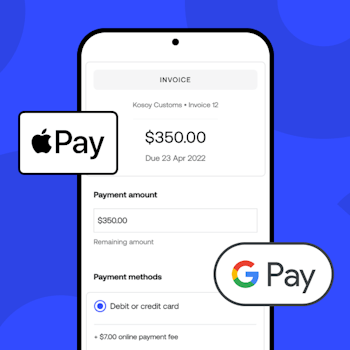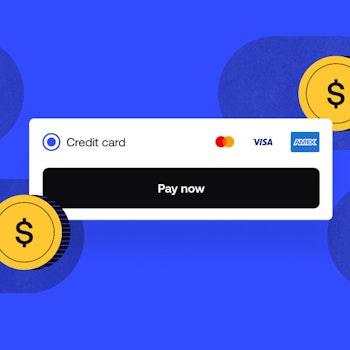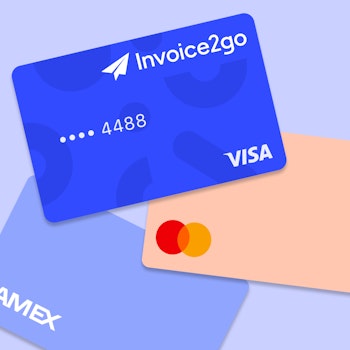
Small business trends for 2022
Two years into the great upheaval of 2020, it seems like change is the only constant for small business owners. What we’ve lost sure doesn’t seem like it’s coming back, but what we’ve gained along the way is significant.
We’ve learned to adapt and to listen – challenged ourselves to grow and improve in ways we could not have imagined before. We’ve come to embrace technology to become more resourceful, efficient, and accessible. Many of us have grown and expanded our businesses or taken new directions entirely, with some choosing to strike out on their own, either as freelancers or founders of new small businesses.
We’ve also learned to be open to what comes next—to embrace the unknown and immerse ourselves in possibilities—because the future never seems to turn out quite the way we’d envisioned.
Strong, resilient, irrepressible. That’s where we’re at right now, at the start of 2022. And if you didn’t imagine we’d still be talking about this almost two years in, join the club. But here we are.
Dare we take a stab at predicting what comes next? Indubitably, we do. Some trends have gained significant ground in the past year, and those that have proved their value are worthy of mention.
Here are some small business trends that will shape the landscape for small business owners in 2022 and beyond.
Small business trends to watch for 2022
1. Having an online presence is more important than ever
Many people switched to working from home after March 2020, while some gave up their jobs entirely. As lockdowns, shutdowns, and public health issues swept the world, online access became essential as it allowed people to access the products and services they needed to feel safe, comfortable, and stay productive.
Small business owners that previously relied on foot traffic or in-person interaction needed to reposition themselves by adding eCommerce features, establishing virtual lines of communication, and ramping up their customer outreach and engagement.
From a consumer point of view, companies that lacked an updated online presence might as well not exist at all. If your social pages and website didn’t offer virtual alternatives or, at the very least, mindful messaging about your response to Covid, it was pretty easy to click away and find a merchant that did.
Small businesses that needed to step up their online game were in luck, as website builders, eCommerce plugins, and virtual communication platforms are dead simple to configure and launch, and this trend is sure to continue.
Some established businesses dove a little deeper, rebranding or at least refreshing their brand to create a better market fit, adding products, services, and messaging that aligned with their customers’ needs better.
Your online presence action plan for 2022
- Give your online presence some love. Audit every page, block of text, product, and service to ensure it reflects your business and your audience right now.
- Check analytics data for your website and social pages to see what’s performing well and what areas need help.
- Start a blog if you haven’t already. Short, helpful articles are a great way to connect and demonstrate how in-tune you are with your customers’ needs.
- Do some recon into what your competitors are doing successfully and emulate features you think would be helpful.
- If you don’t have time or need help, hire a freelancer from a site like UpWork or Fiverr to bridge any skills gaps.
2. Personalized communication will become even more important
Personalization is more than just a buzzword; it’s a marketing technique that’s proven to increase engagement and conversions by a significant margin. In the post-pandemic world, we’ve all felt an increasing need for connection, and personalization is a way to answer that desire, at least in part. We may not be able to connect with our customers in person, but if we can show empathy and make a little extra effort to build bridges (rather than standing behind barriers), it fosters trust and loyalty.
According to recent statistics, 66% of consumers feel that brands should understand their preferences. 82% of marketers report increased email open rates when messaging is personalized, while lack of personalization results in 83% less engagement in the average marketing campaign.
And while you might think that personalization is solely the realm of the enterprise, it’s much more accessible than you think. Email marketing apps and modern CRMs provide personalization features, so accomplishing this task is easy and often free. It’s also a trend that’s gaining ground, so the time to embrace personalization is now.
Your personalization action plan for 2022
You might already have the tools to launch a personalization initiative in 2022. Simple personalization is built-in if you use an email marketing app like MailChimp or HubSpot. Have a look at your preferences to enable this feature.
If you’re an Invoice2go, a Bill.com company, customer, you’ll be excited to know that HubSpot integration is in the pipeline, so you’ll be able to personalize communication and integrate with all your business essentials.
If you have more complex personalization needs, such as if you’re a sales or marketing professional managing drip campaigns or funnels, you might want to think about investing in more advanced features. For example, you can configure HubSpot to enable highly personalized automated campaigns where each email is tailored to where the customer is in their buying journey. Of course, this strategy is worth a few thousand words in itself, so we’ll just leave it at that!
3. Cashless payments will become the norm
We’re all pretty much on the same page with this—nobody has any need or desire to touch anything that dozens of other people have touched before you. Public health aside, some merchants are more diligent than others, but even the best can’t plan for everything.
Most consumers (us included) prefer to go cashless these days, both online and in-store. Plus, it’s easier (and cheaper) than ever to enable online or cashless payments. There are plenty of payment processors to choose from, and most of them take a lot less of a chunk of your business than a bank does.
Invoice2go offers online cashless payments for credit, debit, and even PayPal. Once you’re signed up, your clients can pay directly from the invoices you send through Invoice2go. You’ll get paid about three weeks faster, on average, and that’s value that goes straight to the bottom line. You can also collect payments in person and track all activity through your dashboard. Check out our article on small business apps—we dedicate a whole section to payment processing!
Your cashless action plan for 2022
If you haven’t enabled cashless payments on your website or within your accounting software, there’s no time like the present! Do it now. You’ll improve cash flow, make life easier for your customers, and benefit from payment automation, more accurate reporting, and maybe a little more time to do stuff you really want to do.
4. Protecting against inflation will be more important
Markets are volatile right now and will likely remain so for the foreseeable future. You’ve probably already noticed your cost of doing business has gone up, either because of higher prices for raw materials and equipment, utilities, rent, or leasing costs. Wages are rising as well, and if you have employees, you know how critical it is to ensure they’re well-cared-for.
So, while we can’t control inflation or even where it will hit us hardest, there are ways to mitigate the impact. A few examples include increasing efficiency, onboarding new software, sunsetting outdated and costly solutions or equipment, migrating your business data to the cloud, and even downsizing your on-prem space.
We published a detailed article on how to protect your small business against inflation, and it’s highly recommended reading. In it, you’ll discover a few new ways to approach old problems.
Your anti-inflation action plan for 2022
- · Revisit your pricing strategies. Ensure you’re charging enough for your services; if you haven’t raised your rates in a while, you’ll likely have no pushback from clients.
- Improve your cash flow with automated invoicing and cashless payments.
- Apply for debt forgiveness from any stimulus income you received. If you’re still paying down student debt, you might also have some new forgiveness opportunities based on new legislation; however, it’s a limited-time offer, so you’ll need to get on it.
- Audit your subscriptions. If you’re like us, you probably have a bunch of recurring charges for subscription services you no longer use. Go over your expenses in detail to see what you can eliminate.
- Renegotiate your service contracts. Most companies don’t bother to let you know your contract is renewing and will just re-up when your anniversary date comes around. However, much has changed in the ways we do business, so you likely have a few features on your accounts that aren’t relevant anymore. Benchmarking is also essential; be sure you’re getting good value for what you pay on your service contracts. Most companies won’t want to lose your business and will work with you to develop a plan that suits you better.
- Work smarter. Productivity apps can help you automate and streamline your workflows, and you might just gain more time in your day to take on new business or add new services—without piling on more work and stress. You can automate emails, bill payments, bookkeeping, invoicing, marketing, shipping, and inventory using third-party software. Plus, most solutions are subscription-based, so they’re easy on the budget.
5. Embrace virtual events and remote work whenever possible
Not all small businesses can be run remotely, but there are plenty of things you can shift online. Everybody knows that Zoom meetings are no substitute for face-to-face interactions all the time, but they can certainly fill the gaps. Plus, since they’re virtual, it matters little where your colleagues are. They’ll be able to attend.
But to maximize the value of virtual, you need the right tools—software and hardware. For example, if you’re working from home, you’ll need to invest in fast internet and business-grade security features. If you do a lot of online meetings, you might want to purchase some decent lighting or a better webcam. If you work as part of a team or work on projects with multiple layers of input, think about implementing productivity software that you can all use to communicate as well as track and iterate tasks.
What you choose will ultimately need to make sense to your business model, but there are many things out there to think about. For example, some of our Invoice2go contractor clients have invested in project management software that allows them to conduct site inspections virtually. It’s super-convenient (and safe) for the client, and most contractors find it saves them a lot of time in that they can weed out the tire-kickers without having to spend a day traveling.
Your virtual action plan for 2022
- Identify activities or processes that can be accomplished virtually.
- Research the right software solutions to make that happen.
- Think about yourself as well as your employees, colleagues, and customers.
- Update your website, social pages, and online listings to reflect your virtual status.
6. Give video marketing a try!
Video marketing is growing in popularity. Many people prefer to watch a short video than read long blocks of text. Of course, you can combine the two, but a video has a few distinct advantages for small businesses.
Video is engaging and entertaining. It also allows you to show your human side, putting a face to your brand, so to speak. When your customers can connect you to your product, it increases trust, builds loyalty, and drives conversions better than most types of online advertising.
For example, including a video in your marketing emails increases open rates by 19% and boosts click-through by 65%, but those are just averages.
Many small businesses achieve amazing results on TikTok – and not all of them had badass dance moves. Believe it or not, one of the biggest trends on TikTok is financial advice.
But whatever it is you do, if you’ve got something of value to impart, give video a shot. TikTok or not, video is a growing trend from living rooms to boardrooms. 75% of executives say they watch business-related videos weekly, and many take action from them.
Your video action plan for 2022
- Invest in a decent webcam and lighting.
- Come up with a list of bite-sized topics that your audience wants to know about.
- If you’re shy, practice. Or maybe you have someone on staff who’d be happy to help out.
- Include short videos in your emails.
- Start a TikTok channel (if that makes sense to you).
- Compile a media library on your website, grouped by category, so your site visitors will find what they’re interested in.
- Repurpose your videos for social media.
- Learn video editing tips and tricks, or hire a freelancer to help you out.
We hope some of these small business trends resonated with you. Looking for more inspiration?
Related Articles

How to accept credit card payments on Invoice2go in 3 simple steps

Accept payments online via Apple Pay and Google Pay

Must-not-miss write-offs as you wrap up 2022 year-end finances

5 ways accepting credit and debit card payments helps your business stay resilient

4 easy ways to increase cash flow today

What is Small Business Saturday and why is it important?
The features and surprising benefits of a well-designed packing slip
